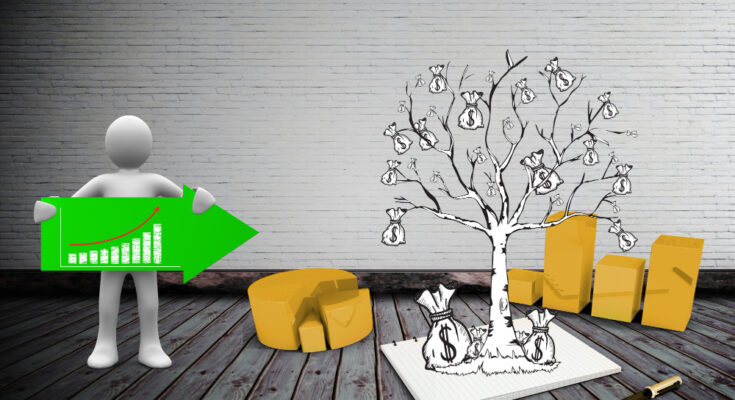Are you looking to take your e-commerce business to the next level? If so, then you’ve likely come across two popular fulfillment methods: Amazon FBA and dropshipping. But which one is right for you? In this blog post, we’ll explore the key differences between these two strategies so you can make an informed decision and set yourself up for success in the competitive world of online retail. Let’s dive in!
Introduction to E-commerce and Fulfillment Methods
Welcome to the dynamic world of e-commerce, where businesses thrive in the digital realm by reaching customers far and wide. Fulfillment methods play a crucial role in ensuring smooth operations and customer satisfaction. Today, we are diving into the exciting comparison between Amazon FBA and Dropshipping, two popular fulfillment strategies that have revolutionized online retail. Let’s explore their differences, advantages, and success stories to help you navigate through the maze of e-commerce options!
Differences Between Amazon FBA and Dropshipping
What is Amazon FBA?
Have you ever wondered how Amazon manages to deliver millions of products to customers worldwide with lightning speed and efficiency? The answer lies in their Fulfillment by Amazon (FBA) program.
Amazon FBA is a service where sellers can store their products in Amazon’s fulfillment centers. When a customer places an order, Amazon takes care of picking, packing, shipping, and even customer service for these orders. This allows businesses to focus on growing their sales while leaving the logistics to Amazon.
The beauty of FBA is that it enables sellers to reach Prime customers with ease and take advantage of Amazon’s reputation for fast and reliable delivery. By leveraging Amazon’s vast network and resources, sellers can scale their business without worrying about storage space or order fulfillment logistics.
In essence, Amazon FBA simplifies the e-commerce process for sellers by handling the operational aspects efficiently and effectively.
Pros and Cons of Amazon FBA
When it comes to Amazon FBA, one of the main advantages is the ease of use. Sellers can leverage Amazon’s robust infrastructure for storage, packing, and shipping their products, saving them time and effort. This allows businesses to focus on scaling their operations rather than worrying about logistics.
Another pro of using Amazon FBA is access to Prime customers. By utilizing Fulfillment by Amazon, sellers can tap into a vast customer base that values fast and reliable shipping through Amazon Prime. This can lead to increased visibility and sales for products listed under FBA.
On the flip side, one potential con of Amazon FBA is the fees associated with using the service. While convenient, these fees can eat into profit margins for smaller businesses or those selling low-margin products. It’s essential for sellers to carefully calculate costs before opting for FBA to ensure profitability.
Overall, while there are both pros and cons to using Amazon FBA, many sellers find that the benefits outweigh any drawbacks when it comes to streamlining operations and reaching a broader customer base through the e-commerce giant.

How it Works
Amazon FBA operates on a simple premise: sellers send their products to Amazon’s fulfillment centers, where the company takes care of storage, packaging, and shipping. Once a customer places an order, Amazon handles the entire process from start to finish. This means that sellers don’t have to worry about storing inventory or dealing with logistics themselves.
When a customer buys a product through Amazon Prime or any other platform, the order is fulfilled by Amazon directly. The seller receives their share of the sale price after deducting fees for using the FBA service. This seamless integration allows businesses to scale quickly without being bogged down by operational tasks.
By leveraging Amazon’s extensive network of warehouses and delivery infrastructure, sellers can reach customers across the globe efficiently. The ability to tap into Amazon’s vast customer base provides unparalleled exposure and potential for growth in online sales.
Success Stories and Case Studies
Success stories and case studies of Amazon FBA showcase the potential for entrepreneurs to thrive in the e-commerce world. Take Sarah, for example, who saw a 200% increase in sales after utilizing Amazon FBA’s fulfillment services. Her business went from struggling to thriving within months.
Another inspiring tale is that of Mark, who started his online store with dropshipping. By leveraging the advantages of low startup costs and minimal risk, he was able to quickly scale his business and achieve financial success.
These real-life examples highlight how both Amazon FBA and dropshipping can be lucrative ventures when executed strategically. It goes to show that with dedication and smart decision-making, anyone can carve out their own path to success in the competitive e-commerce landscape.
What is Dropshipping?
Dropshipping is a popular e-commerce fulfillment method where the retailer doesn’t keep stock on hand. Instead, when a product is sold, the retailer purchases it from a third party and has it shipped directly to the customer. This means that the retailer never handles the product physically.
One of the main advantages of dropshipping is that it requires lower upfront costs compared to traditional retail models. Retailers don’t have to invest in inventory or storage space, making it an attractive option for those looking to start an online business with limited capital.
However, dropshipping also comes with its own set of challenges. Retailers may face issues such as longer shipping times and difficulties in quality control since they don’t have direct oversight over the products being shipped out.
Overall, dropshipping can be a viable business model for entrepreneurs willing to navigate its unique complexities and build successful partnerships with suppliers.
Pros and Cons of Dropshipping
Dropshipping offers a low barrier to entry, making it an attractive option for those looking to start an e-commerce business without the need for a large upfront investment in inventory. This allows entrepreneurs to test various products and niches quickly and easily.
On the flip side, one of the main drawbacks of dropshipping is the lower profit margins compared to traditional retail models. Since you are not purchasing products in bulk at wholesale prices, each sale may yield less profit.
Another advantage of dropshipping is the flexibility it provides in terms of location independence. As long as you have an internet connection, you can run your dropshipping business from anywhere in the world.
However, reliance on third-party suppliers means that you have less control over inventory management and shipping times. Delays or errors by suppliers can impact customer satisfaction and ultimately your business’s reputation.
How it Works
Amazon FBA works by allowing sellers to store their products in Amazon’s fulfillment centers. Once a customer places an order, Amazon picks, packs, and ships the item on behalf of the seller. This eliminates the need for sellers to handle storage, packing, and shipping logistics.
Sellers first create listings for their products on Amazon’s platform. When an order is placed, Amazon’s team takes care of all aspects of order fulfillment. From storing inventory to managing returns, Amazon FBA streamlines the entire process for sellers.
Additionally, with Amazon FBA, sellers benefit from Prime eligibility which can result in increased visibility and sales due to faster shipping times. This program provides access to a vast customer base that trusts the reliability and convenience of Prime delivery.
Overall, the simplicity and efficiency of how Amazon FBA works make it an attractive option for many e-commerce businesses looking to scale without getting bogged down by logistics.

Success Stories and Case Studies
Curious about real-life success stories in the world of e-commerce? Let’s dive into some inspiring case studies to see how Amazon FBA and Dropshipping have transformed businesses.
In one instance, a small business owner saw exponential growth after utilizing Amazon FBA. By leveraging the platform’s vast reach and logistical support, they were able to scale their operations rapidly. This resulted in increased sales and customer satisfaction.
On the other hand, a budding entrepreneur thrived through Dropshipping by minimizing upfront costs and risks associated with traditional retail models. With no need for inventory storage or order fulfillment, they focused on marketing and building strong relationships with suppliers.
These success stories highlight the diverse opportunities available in the e-commerce landscape. Whether you choose Amazon FBA or Dropshipping, strategic planning and dedication can pave the way for remarkable achievements in online selling.
Key Differences Between Amazon FBA and Dropshipping
When it comes to comparing Amazon FBA and dropshipping, one key difference lies in the cost structure. With Amazon FBA, sellers are required to pay storage fees, fulfillment fees, and other associated costs. On the other hand, dropshipping eliminates the need for upfront inventory investment or storage expenses.
Another distinguishing factor is inventory management. With Amazon FBA, sellers have full control over their inventory stored in Amazon’s warehouses. In contrast, dropshipping involves relying on suppliers to manage and ship products directly to customers.
Customer service also sets these two models apart. Amazon FBA provides customer support through its platform, handling returns and inquiries on behalf of sellers. Dropshipping requires sellers to take charge of customer service tasks such as resolving issues and processing returns independently.
These differences play a crucial role in determining which e-commerce model aligns best with a seller’s business goals and resources.
Cost Comparison
When it comes to comparing Amazon FBA and dropshipping in terms of cost, there are several factors to consider.
With Amazon FBA, sellers have to pay for storage fees, fulfillment fees, and other associated costs. These can add up quickly, especially if your products are not selling as fast as you anticipated.
On the other hand, dropshipping typically involves lower upfront costs since you don’t need to invest in inventory or storage space. However, dropshippers may face higher per-unit costs from suppliers due to the lack of bulk discounts.
It’s essential to calculate all expenses accurately before deciding which model is more cost-effective for your business. Keep in mind that unexpected costs can arise in both Amazon FBA and dropshipping ventures.
Ultimately, understanding the financial implications of each fulfillment method is crucial for making informed decisions about which approach aligns best with your budget and business goals.

Inventory Management
Inventory management plays a crucial role in the success of both Amazon FBA and dropshipping businesses. With Amazon FBA, sellers are responsible for stocking and managing inventory in Amazon’s fulfillment centers. This means that they have more control over their stock levels and can take advantage of Amazon’s fast shipping services.
On the other hand, dropshipping eliminates the need for storing inventory as products are shipped directly from suppliers to customers. This can be seen as a pro for dropshippers who don’t have to worry about managing stock or warehouse space. However, it also means less control over product availability and quality.
Both fulfillment methods require careful monitoring of inventory levels to prevent stockouts or overselling. In conclusion, whether you choose Amazon FBA or dropshipping, effective inventory management is key to meeting customer demands and maintaining a successful e-commerce business.
Customer Service
Customer service is a crucial aspect of any e-commerce business. Amazon FBA takes care of customer inquiries, returns, and refunds on behalf of the seller, providing a level of convenience for both parties. On the other hand, with dropshipping, maintaining good communication with suppliers and handling customer service inquiries falls solely on the shoulders of the retailer.
In choosing between Amazon FBA and dropshipping, consider your priorities regarding costs, inventory management, and customer service. Each fulfillment method has its unique advantages and challenges that can impact your e-commerce business’s success. Finding the right balance that aligns with your goals is key to thriving in the competitive world of online retailing.




One Comment on “Exploring the Differences Between Amazon FBA and Dropshipping 2024”